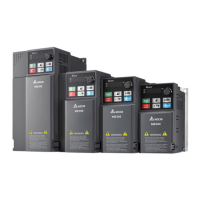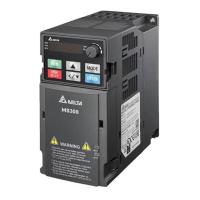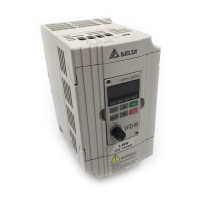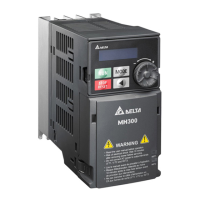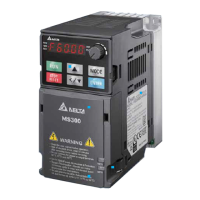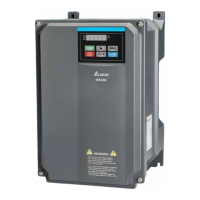Chapter 12 Description of Parameter Settings
ME300
Upper Limit of Integral Control
Default: 100.0
Settings 0.0–100.0%
Defines an upper bound for the integral gain (I) and therefore limits the master frequency. The
formula is:
Integral upper bound = Maximum Operation Frequency (Pr.01-00) x (Pr.08-04%). An excessive
integral value causes a slow response due to sudden load changes and may cause motor stall or
machine damage.
PID Output Command Limit (Positive Limit)
Default: 100.0
Settings 0.0–100.0%
Defines the percentage of the output frequency limit during the PID control. The formula is Output
Frequency Limit = Maximum Operation Frequency (Pr.01-00) × Pr.08-05%.
PID Feedback Value by Communication Protocol
Default: 0.00
Settings
-200.00
–200.00%
Use communication to set the PID feedback value when the PID feedback input is set to
communication (Pr.08-00 = 7 or 8).
Default: 0.0
Settings 0.0–2.5 sec.
Default: 0
Settings
0: Serial connection
1: Parallel connection
0: Use conventional PID control structure.
1: The proportional gain, integral gain and differential gain are independent. You can customize
the P, I and D value to fit your application.
Pr.08-07 determines the primary low pass filter time when in PID control. Setting a large time
constant may slow down the drive’s response rate.
PID control output frequency is filtered with a primary low pass function. This function can filter a
mix of frequencies. A long primary low pass time means the filter degree is high and a short
primary low pass time means the filter degree is low.
Inappropriate delay time setting may cause system error.
PI Control:
Controlled only by the P action, so the deviation cannot be entirely eliminated. In general, to
eliminate residual deviations, use the P + I controls. When you use the PI control, it eliminates the
deviation caused by the targeted value changes and the constant external interferences. However,
if the I action is too powerful, it delays the response when there is rapid variation. You can use the
P action by itself to control the loading system with the integral components.
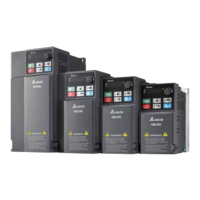
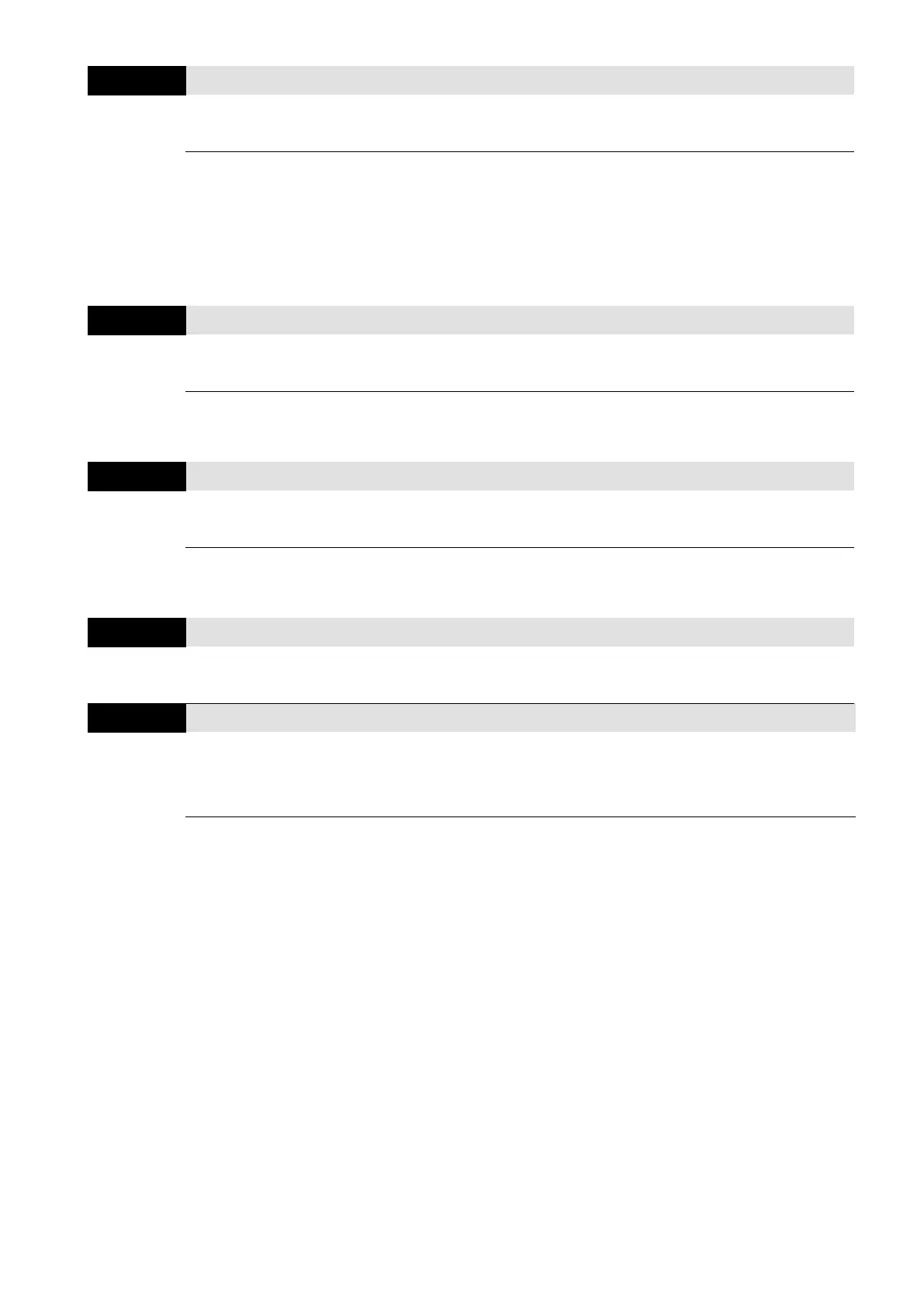